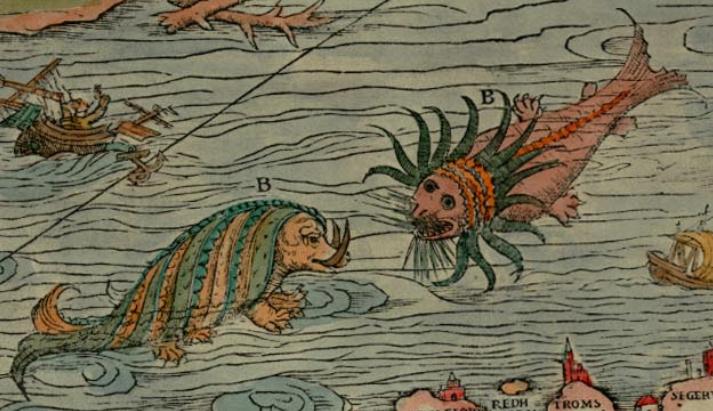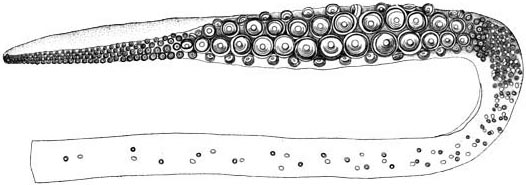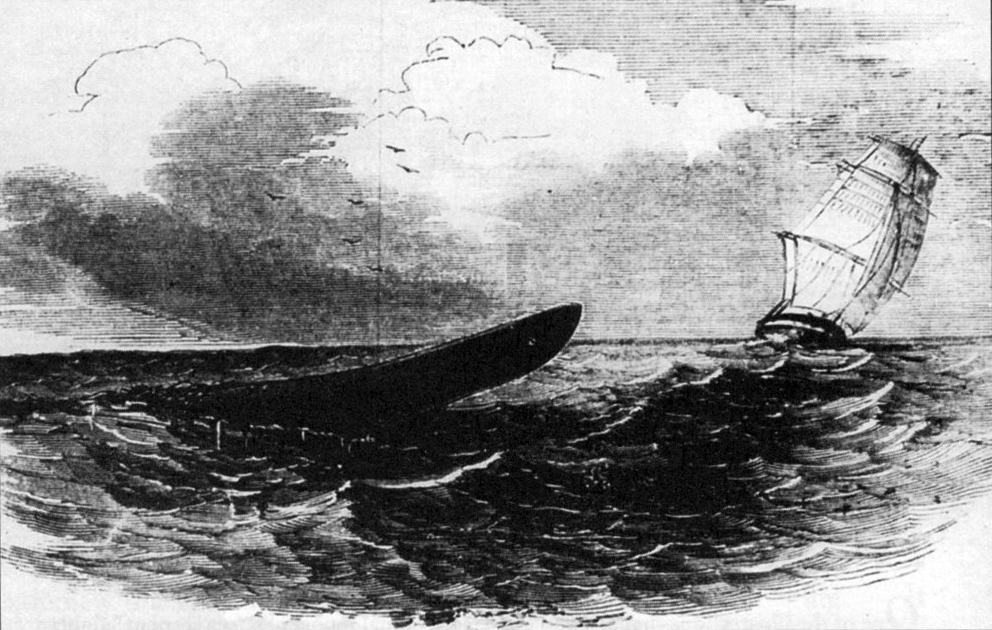|
Bernard Heuvelmans
Bernard Heuvelmans (10 October 1916 – 22 August 2001) was a Belgian-French scientist, explorer, researcher, and writer probably best known, along with Scottish-American biologist Ivan T. Sanderson, as a founding figure in the pseudoscience and subculture of cryptozoology. His 1958 book '' On the Track of Unknown Animals'' (originally published in French in 1955 as ''Sur la Piste des Bêtes Ignorées'') is often regarded as one of the most influential cryptozoology texts. Life Heuvelmans was born on 10 October 1916 in Le Havre, France, and raised in Belgium and earned a doctorate in zoology from the Free University of Brussels (now split into the Université Libre de Bruxelles and the Vrije Universiteit Brussel). Heuvelmans was a pupil of Serge Frechkop, a proponent of the Theory of Initial Bipedalism. In 1939, his doctoral dissertation concerned the teeth of the aardvark. During World War II he had escaped from a Nazi prison camp and later worked as a jazz singer in Par ... [...More Info...] [...Related Items...] OR: [Wikipedia] [Google] [Baidu] |
Le Havre
Le Havre (, ; nrf, Lé Hâvre ) is a port city in the Seine-Maritime department in the Normandy region of northern France. It is situated on the right bank of the estuary of the river Seine on the Channel southwest of the Pays de Caux, very close to the Prime Meridian. Le Havre is the most populous commune of Upper Normandy, although the total population of the greater Le Havre conurbation is smaller than that of Rouen. After Reims, it is also the second largest subprefecture in France. The name ''Le Havre'' means "the harbour" or "the port". Its inhabitants are known as ''Havrais'' or ''Havraises''. The city and port were founded by King Francis I in 1517. Economic development in the Early modern period was hampered by religious wars, conflicts with the English, epidemics, and storms. It was from the end of the 18th century that Le Havre started growing and the port took off first with the slave trade then other international trade. After the 1944 bombings the firm o ... [...More Info...] [...Related Items...] OR: [Wikipedia] [Google] [Baidu] |
Serge Frechkop
Serge may refer to: *Serge (fabric), a type of twill fabric *Serge (llama) (born 2005), a llama in the Cirque Franco-Italien and internet meme *Serge (name), a masculine given name (includes a list of people with this name) *Serge (post), a hitching post used among the Buryats and Yakuts *Serge synthesizer, a modular synthesizer See also *Overlock, a type of stitch known as "serger" in North America *Surge (other) Surge means a sudden transient rush or flood, and may refer to: Science * Storm surge, the onshore gush of water associated with a low-pressure weather system * Surge (glacier), a short-lived event where a glacier can move up to velocities 100 ... * Serg (other) {{disambiguation ... [...More Info...] [...Related Items...] OR: [Wikipedia] [Google] [Baidu] |
Gigantic Octopus
The kraken () is a legendary sea monster of enormous size said to appear off the coasts of Norway. Kraken, the subject of sailors' superstitions and mythos, was first described in the modern age at the turn of the 18th century, in a travelogue by Francesco Negri in 1700. This description was followed in 1734 by an account from Dano-Norwegian missionary and explorer Hans Egede, who described the kraken in detail and equated it with the '' hafgufa'' of medieval lore. However, the first description of the creature is usually credited to the Norwegian bishop, Pontoppidan (1753). Pontoppidan was the first to describe the kraken as an octopus (polypus) of tremendous size, and wrote that it had a reputation for pulling down ships. The French malacologist, Denys-Montfort, of the 19th century is also known for his pioneering inquiries into the existence of gigantic octopuses. The great man-killing octopus entered French fiction when novelist Victor Hugo (1866) introduced the ' ... [...More Info...] [...Related Items...] OR: [Wikipedia] [Google] [Baidu] |
Giant Squid
The giant squid (''Architeuthis dux'') is a species of deep-ocean dwelling squid in the family Architeuthidae. It can grow to a tremendous size, offering an example of abyssal gigantism: recent estimates put the maximum size at around Tracey, D. M., O. F. Anderson & J. R. Naylor (2011)''A guide to common deepsea invertebrates in New Zealand waters. Third edition.''National Institute of Water and Atmospheric Research, Wellington. 317 pp.Yukhov, V. L. (2014)Гигантские кальмары рода ''Architeuthis'' в Южном океане / Giant calmaries ''Аrchiteuthis'' in the Southern ocean igantskiye kalmary roda ''Architeuthis'' v Yuzhnom okeane.''Ukrainian Antarctic Journal'' no. 13: 242–253. for females and for males, from the posterior fins to the tip of the two long tentacles (longer than the colossal squid at an estimated , but substantially lighter, due to the tentacles making up most of the length). The mantle of the giant squid is about lon ... [...More Info...] [...Related Items...] OR: [Wikipedia] [Google] [Baidu] |
Sea Serpents
A sea serpent or sea dragon is a type of dragon sea monster described in various mythologies, most notably Mesopotamian ( Tiamat), Judaeo-Christian ( Leviathan), Greek ( Cetus, Echidna, Hydra, Scylla), and Norse ( Jörmungandr). Mythology and folklore Mediterranean and Western Asia The mytheme, the chief god in the role of the hero slaying a sea serpent, is widespread both in the ancient Near East and in Indo-European mythology, e.g. Lotan and Hadad, Leviathan and Yahweh, Tiamat and Marduk (see also Labbu, Bašmu, Mušḫuššu), Illuyanka and Tarhunt, Yammu and Baal in the Baal Cycle etc. The Hebrew Bible also has less mythological descriptions of large sea creatures as part of creation under God's command, such as the Tanninim mentioned in Book of Genesis 1:21 and the "great serpent" of Amos 9:3. In the Aeneid, a pair of sea serpents killed Laocoön and his sons when Laocoön argued against bringing the Trojan Horse into Troy. In antiquity and in the Bible, dra ... [...More Info...] [...Related Items...] OR: [Wikipedia] [Google] [Baidu] |
Sea Serpent
A sea serpent or sea dragon is a type of dragon sea monster described in various mythologies, most notably Mesopotamian (Tiamat), Judaeo-Christian (Leviathan), Greek (Cetus, Echidna, Hydra, Scylla), and Norse (Jörmungandr). Mythology and folklore Mediterranean and Western Asia The mytheme, the chief god in the role of the hero slaying a sea serpent, is widespread both in the ancient Near East and in Indo-European mythology, e.g. Lotan and Hadad, Leviathan and Yahweh, Tiamat and Marduk (see also Labbu, Bašmu, Mušḫuššu), Illuyanka and Tarhunt, Yammu and Baal in the Baal Cycle etc. The Hebrew Bible also has less mythological descriptions of large sea creatures as part of creation under God's command, such as the Tanninim mentioned in Book of Genesis 1:21 and the "great serpent" of Amos 9:3. In the Aeneid, a pair of sea serpents killed Laocoön and his sons when Laocoön argued against bringing the Trojan Horse into Troy. In antiquity and in the Bible, dragons were ... [...More Info...] [...Related Items...] OR: [Wikipedia] [Google] [Baidu] |
Anthonie Cornelis Oudemans
Anthonie (Antoon) Cornelis Oudemans Jzn (November 12, 1858 – January 14, 1943) was a Dutch zoologist. Although he was a specialist in acarology, the study of the ticks and mites, he was often best known for his books on sea monsters and the dodo. Born in Batavia, Dutch East Indies, he was the son of the noted Dutch astronomer Jean Abraham Chrétien Oudemans and the grandson of the Dutch educator, poet and philologist Anthonie Cornelis Oudemans Sr., after whom he was named. He often used the patronymic "Jzn" (for ''Jeanzoon'') in his publications. A cousin was the entomologist J.T. Oudemans. He was educated at Arnhem and went to the University of Utrecht. He wrote his dissertation on ribbon worms, and in 1885 was appointed director of the Royal Zoological Gardens at The Hague. Oudemans worked on the acari and comprehensively reviewed all literature until 1850 in a series of articles titled ''Kritisch historisch Overzicht der Acarologie''. He described numerous species not onl ... [...More Info...] [...Related Items...] OR: [Wikipedia] [Google] [Baidu] |
Dinosaur
Dinosaurs are a diverse group of reptiles of the clade Dinosauria. They first appeared during the Triassic period, between 243 and 233.23 million years ago (mya), although the exact origin and timing of the evolution of dinosaurs is the subject of active research. They became the dominant terrestrial vertebrates after the Triassic–Jurassic extinction event 201.3 mya; their dominance continued throughout the Jurassic and Cretaceous periods. The fossil record shows that birds are feathered dinosaurs, having evolved from earlier theropods during the Late Jurassic epoch, and are the only dinosaur lineage known to have survived the Cretaceous–Paleogene extinction event approximately 66 mya. Dinosaurs can therefore be divided into avian dinosaurs—birds—and the extinct non-avian dinosaurs, which are all dinosaurs other than birds. Dinosaurs are varied from taxonomic, morphological and ecological standpoints. Birds, at over 10,700 living species, ar ... [...More Info...] [...Related Items...] OR: [Wikipedia] [Google] [Baidu] |
Saturday Evening Post
''The Saturday Evening Post'' is an American magazine, currently published six times a year. It was issued weekly under this title from 1897 until 1963, then every two weeks until 1969. From the 1920s to the 1960s, it was one of the most widely circulated and influential magazines within the American middle class, with fiction, non-fiction, cartoons and features that reached two million homes every week. The magazine declined in readership through the 1960s, and in 1969 ''The Saturday Evening Post'' folded for two years before being revived as a quarterly publication with an emphasis on medical articles in 1971. As of the late 2000s, ''The Saturday Evening Post'' is published six times a year by the Saturday Evening Post Society, which purchased the magazine in 1982. The magazine was redesigned in 2013. History Rise ''The Saturday Evening Post'' was first published in 1821 in the same printing shop at 53 Market Street in Philadelphia where the Benjamin Franklin-founded ''Pennsy ... [...More Info...] [...Related Items...] OR: [Wikipedia] [Google] [Baidu] |
The Lost World (Conan Doyle Novel)
''The Lost World'' is a science fiction novel by British writer Sir Arthur Conan Doyle, published by Hodder & Stoughton in 1912, concerning an expedition to a plateau in the Amazon basin of South America where prehistoric animals still survive. It was originally published serially in the '' Strand Magazine'' and illustrated by New Zealand–born artist Harry Rountree during the months of April–November 1912. The character of Professor Challenger was introduced in this book. The novel also describes a war between indigenous people and a vicious tribe of ape-like creatures. Plot summary Edward Malone, a young reporter for the ''Daily Gazette'', asks his editor for a dangerous assignment to impress the woman he loves, Gladys, who wishes for a great man capable of brave deeds and actions. His task is to approach the notorious Professor Challenger, who dislikes the popular press intensely and physically assaults intrusive journalists. The subject is to be his recent South ... [...More Info...] [...Related Items...] OR: [Wikipedia] [Google] [Baidu] |
Arthur Conan Doyle
Sir Arthur Ignatius Conan Doyle (22 May 1859 – 7 July 1930) was a British writer and physician. He created the character Sherlock Holmes in 1887 for ''A Study in Scarlet'', the first of four novels and fifty-six short stories about Holmes and Dr. Watson. The Sherlock Holmes stories are milestones in the field of crime fiction. Doyle was a prolific writer; other than Holmes stories, his works include fantasy and science fiction stories about Professor Challenger and humorous stories about the Napoleonic soldier Brigadier Gerard, as well as plays, romances, poetry, non-fiction, and historical novels. One of Doyle's early short stories, " J. Habakuk Jephson's Statement" (1884), helped to popularise the mystery of the ''Mary Celeste''. Name Doyle is often referred to as "Sir Arthur Conan Doyle" or "Conan Doyle", implying that "Conan" is part of a compound surname rather than a middle name. His baptism entry in the register of St Mary's Cathedral, Edinburgh, gives "Ar ... [...More Info...] [...Related Items...] OR: [Wikipedia] [Google] [Baidu] |
Jules Verne
Jules Gabriel Verne (;''Longman Pronunciation Dictionary''. ; 8 February 1828 – 24 March 1905) was a French novelist, poet, and playwright. His collaboration with the publisher Pierre-Jules Hetzel led to the creation of the '' Voyages extraordinaires'', a series of bestselling adventure novels including '' Journey to the Center of the Earth'' (1864), '' Twenty Thousand Leagues Under the Seas'' (1870), and ''Around the World in Eighty Days'' (1872). His novels, always well documented, are generally set in the second half of the 19th century, taking into account the technological advances of the time. In addition to his novels, he wrote numerous plays, short stories, autobiographical accounts, poetry, songs and scientific, artistic and literary studies. His work has been adapted for film and television since the beginning of cinema, as well as for comic books, theater, opera, music and video games. Verne is considered to be an important author in France and most of Europe, wh ... [...More Info...] [...Related Items...] OR: [Wikipedia] [Google] [Baidu] |






.jpg)
